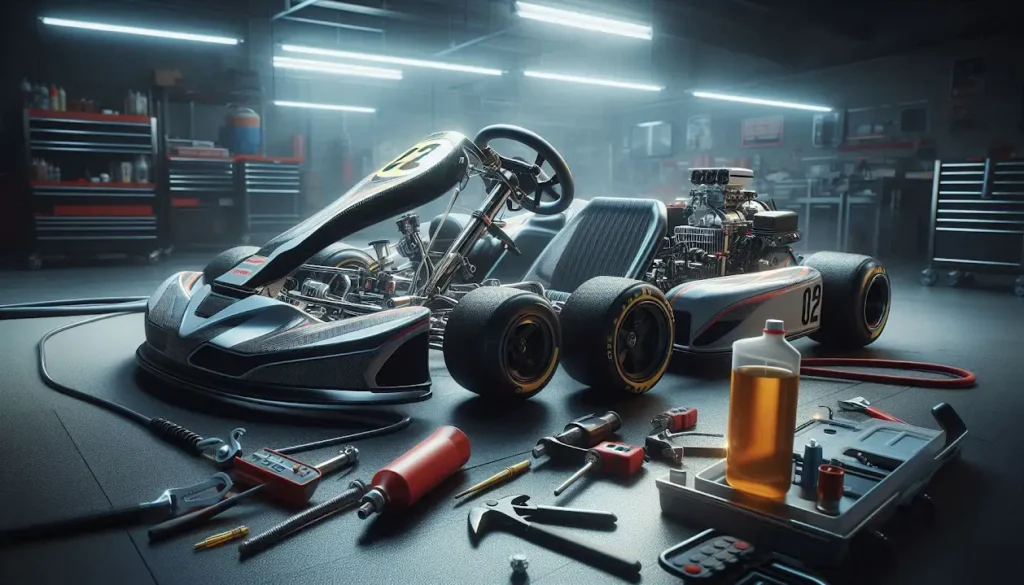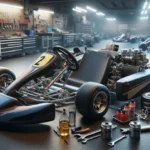Breaking Ground: UAE’s Revolutionary Approach to Residential Entertainment
The United Arab Emirates has long been synonymous with architectural innovation and luxury living, but its latest development trend marks an unprecedented fusion of residential comfort and high-octane entertainment. Property developers across Dubai, Abu Dhabi, and Sharjah are increasingly incorporating professional-grade go-karting circuits into their premium residential projects, creating a unique value proposition that sets them apart in the competitive real estate market.
This revolutionary approach to community planning stems from the UAE’s deep-rooted passion for motorsports, combined with its commitment to providing unprecedented amenities to residents. The integration of go-karting facilities within residential developments represents more than just an additional feature – it symbolizes the evolution of luxury living in the region, where the line between home and entertainment continues to blur.
Statistical analysis reveals that properties featuring integrated racing facilities have experienced a 15-20% higher appreciation rate compared to similar developments without such amenities. This trend has caught the attention of both local and international investors, who recognize the potential of these unique developments to attract a specific demographic of high-net-worth individuals passionate about motorsports.
Market research conducted across the UAE’s major emirates indicates that 73% of potential luxury property buyers consider unique recreational facilities a crucial factor in their purchase decisions. The integration of go-karting circuits has emerged as a distinctive selling point, particularly appealing to families with young children and motorsport enthusiasts seeking an immersive lifestyle experience.
Engineering Excellence: Designing Circuits Within Urban Constraints
The implementation of go-karting circuits within residential developments presents unique engineering challenges that require innovative solutions. Architects and civil engineers collaborate to create circuits that meet international safety standards while maximizing available space and minimizing noise pollution – a crucial consideration in residential areas.
Modern circuit designs incorporate state-of-the-art sound barriers and strategic landscaping elements to create natural noise buffers. Advanced track surfaces utilize specially developed materials that reduce tire noise while maintaining optimal grip levels. These technical innovations have made it possible to integrate high-performance racing facilities into residential areas without compromising the comfort of residents.
Environmental considerations play a pivotal role in circuit design, with developers implementing sophisticated drainage systems and using eco-friendly materials. The tracks feature advanced LED lighting systems powered by solar energy, enabling safe nighttime operation while maintaining energy efficiency. Additionally, electric charging infrastructure is integrated throughout the facilities, anticipating the growing trend toward electric karting.
Construction techniques have evolved specifically for these integrated circuits, with contractors developing new methods to ensure track durability under the UAE’s extreme weather conditions. Special heat-resistant compounds in the track surface maintain consistent performance despite temperature variations, while innovative cooling systems help regulate track temperature during peak summer months.
Accelerating Property Values: The Economic Impact of Integrated Racing Facilities
The introduction of go-karting circuits has created a remarkable ripple effect in the UAE’s luxury real estate market. Properties adjacent to these facilities command premium prices, with data showing an average increase of 25% in rental yields compared to similar properties without access to racing amenities.
Investment analysts have observed a significant shift in buyer demographics, with an influx of international investors specifically targeting developments featuring integrated racing facilities. This trend has contributed to a more diverse property market, attracting buyers from traditionally untapped markets in Asia and Europe who share a passion for motorsports.
Local businesses have experienced substantial growth following the integration of racing facilities into residential developments. Retail spaces within these communities report higher occupancy rates and increased foot traffic, while specialized services catering to the karting community have created new economic opportunities for entrepreneurs.
The presence of professional-grade karting facilities has also attracted corporate interest, with companies increasingly choosing these venues for team-building events and corporate functions. This additional revenue stream contributes to the overall economic sustainability of these developments while providing residents with enhanced amenities and services.
Beyond Recreation: Building Communities Through Shared Passion
The integration of go-karting circuits has fostered unique social dynamics within residential communities. Regular racing events and competitions create opportunities for residents to bond over shared interests, leading to stronger community ties and increased resident satisfaction.
Youth development programs centered around karting have emerged as a significant community benefit. These programs combine STEM education with practical racing experience, providing young residents with valuable learning opportunities while nurturing potential future racing talent. Local schools have begun incorporating these facilities into their physical education programs, creating innovative approaches to youth fitness and development.
Professional racing academies have established partnerships with residential developments, offering specialized training programs for residents. These collaborations have created pathways for talented individuals to pursue careers in motorsports, while also providing casual enthusiasts with expert instruction and guidance.
The presence of racing facilities has sparked the formation of various clubs and social groups within communities. From amateur racing leagues to technical workshops, these organizations contribute to a vibrant social ecosystem that extends beyond the track, creating lasting connections among residents who share a passion for motorsports.
Safety First: Implementing World-Class Standards in Residential Racing
The integration of professional racing facilities within residential areas necessitates unprecedented attention to safety protocols. Developers have implemented comprehensive safety management systems that exceed international standards, ensuring the protection of both participants and spectators.
Advanced track monitoring systems utilize artificial intelligence and real-time data analysis to prevent accidents and optimize track conditions. These systems continuously assess variables such as track temperature, grip levels, and weather conditions, automatically adjusting facility operations to maintain optimal safety levels.
Staff training programs have been developed specifically for these integrated facilities, combining traditional racing safety protocols with residential community considerations. Regular safety audits and certification processes ensure that all operations meet or exceed both motorsport and residential safety requirements.
Emergency response capabilities have been enhanced through partnerships with local healthcare providers and first responders. Dedicated medical facilities within the developments are equipped to handle racing-specific injuries, while maintaining readiness for general community healthcare needs.
Innovation in Motion: Technical Advancements in Residential Racing Facilities
The development of integrated racing facilities has spurred significant technological innovations in track design and operations. Smart track systems incorporate sensors throughout the circuit, providing real-time data on track conditions and kart performance while enabling automated maintenance scheduling.
Virtual reality technology has been integrated into training programs, allowing residents to familiarize themselves with track layouts and racing techniques before entering actual karts. These simulation systems provide valuable training tools while adding another dimension to the racing experience.
Tracking systems provide detailed performance analytics to drivers, enabling them to improve their skills through data-driven insights. Mobile applications connected to these systems allow residents to monitor their progress, schedule track time, and participate in virtual competitions.
The implementation of electric karting options demonstrates a commitment to environmental sustainability while providing unique racing experiences. Advanced battery technology and charging systems ensure consistent performance, while reduced noise levels make these options particularly suitable for residential areas.
Luxury Living Redefined: The Future of Integrated Racing Communities
The success of early integrated racing developments has inspired new projects that push the boundaries of luxury residential amenities. Upcoming developments feature even more sophisticated facilities, including indoor climate-controlled tracks and multi-level racing circuits that maximize limited urban space.
International property developers have taken notice of the UAE’s success in this niche market, leading to similar projects being planned in other luxury real estate markets globally. This trend positions the UAE as a pioneer in the integration of professional sports facilities within residential developments.
The evolution of these facilities continues to drive innovation in both real estate development and motorsport technology. New materials, construction techniques, and operational systems developed for these projects have applications beyond residential racing facilities, contributing to the advancement of both industries.
Market analysis suggests that the demand for integrated racing facilities in residential developments will continue to grow, driven by increasing interest in experiential living and the success of existing projects. This trend represents a fundamental shift in luxury real estate development, where exceptional amenities become integral to the residential experience rather than mere additions.


